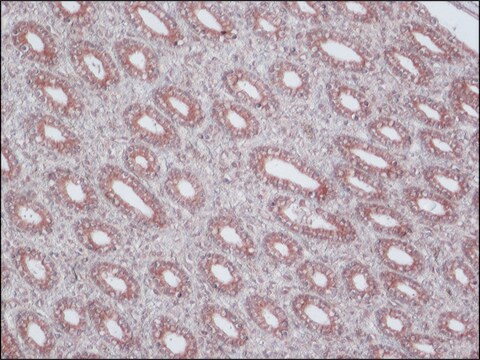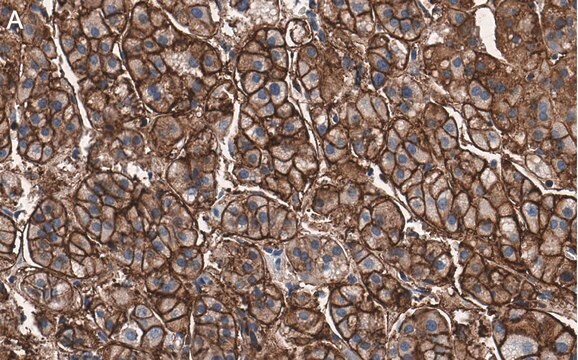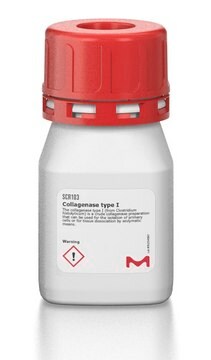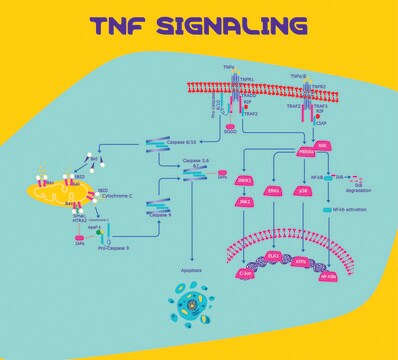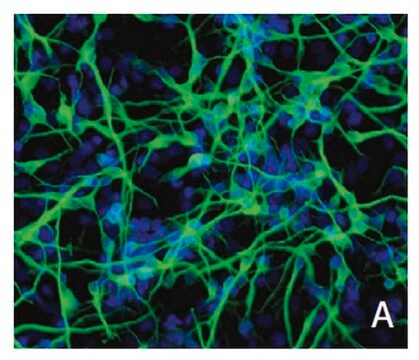MAB4120
Anti-MDR1 Antibody, clone JSB-1
culture supernatant, clone JSB-1, Chemicon®
Sinonimo/i:
P-glycoprotein, CD243, p170, Pgp
About This Item
Prodotti consigliati
Origine biologica
mouse
Livello qualitativo
Forma dell’anticorpo
culture supernatant
Tipo di anticorpo
primary antibodies
Clone
JSB-1, monoclonal
Reattività contro le specie
human, hamster
Produttore/marchio commerciale
Chemicon®
tecniche
flow cytometry: suitable
immunocytochemistry: suitable
immunohistochemistry: suitable (paraffin)
western blot: suitable
Isotipo
IgG1
N° accesso NCBI
N° accesso UniProt
Condizioni di spedizione
wet ice
Informazioni sul gene
human ... ABCB1(5243)
Specificità
JSB-1 does not cross-react with MDR3 P-glycoprotein. JSB-1 has been shown to cross-react with Pyruvate Carboxylase (PC), an abundant Mr 130,000 mitochondrial enzyme, on both immunoblots and immunohistochemical tissue sections [Rao et al. (1995). J Histo. Cytochem. 43(12):1187-1192.] Unequivocal plasma membrane patterns of immunostaining represent true P-glycoprotein ex-presssion. Weak homogeneous, cytoplasmic, or granular patterns of reactivity may represent staining of the PC cross-reactive epitope rather than positive staining for P-glycoprotein.
Immunogeno
Applicazioni
Immunohistochemistry on frozen and paraffin embedded tissue
sections: 1:20.
Immunocytochemistry: acetone or air-dried preparations react well.
Western blot
Note: For cellular detection, permeabilization is required.
Optimal working dilutions must be determined by end user.
Metabolism
Toxicology & Drug Resistance
Descrizione del bersaglio
Stato fisico
Stoccaggio e stabilità
Risultati analitici
MDR cells
Altre note
Note legali
Esclusione di responsabilità
Non trovi il prodotto giusto?
Prova il nostro Motore di ricerca dei prodotti.
Raccomandato
Codice della classe di stoccaggio
12 - Non Combustible Liquids
Classe di pericolosità dell'acqua (WGK)
WGK 1
Punto d’infiammabilità (°F)
Not applicable
Punto d’infiammabilità (°C)
Not applicable
Certificati d'analisi (COA)
Cerca il Certificati d'analisi (COA) digitando il numero di lotto/batch corrispondente. I numeri di lotto o di batch sono stampati sull'etichetta dei prodotti dopo la parola ‘Lotto’ o ‘Batch’.
Possiedi già questo prodotto?
I documenti relativi ai prodotti acquistati recentemente sono disponibili nell’Archivio dei documenti.
Il team dei nostri ricercatori vanta grande esperienza in tutte le aree della ricerca quali Life Science, scienza dei materiali, sintesi chimica, cromatografia, discipline analitiche, ecc..
Contatta l'Assistenza Tecnica.
